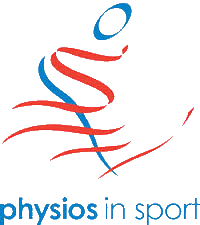Scapula Dyskinesis
The scapula, commonly known as the shoulder blade, is located at the back of the chest wall. The scapula provides the glenoid fossa, the socket where the head of the humerus articulates to form the glenohumeral joint, more commonly known as the shoulder joint.
The scapula has an important role to play in providing the large range of motion provided at the shoulder. The scapula has a large number of muscles attaching to it, allowing it to elevate, depress, protract, retract and rotate and the ratio of arm movement to scapula movement is 2:1.
Scapula dyskinesis is more common in overhead athletes than non-overhead athletes.
Symptoms
Typically, the onset is insidious and can comprise of anterior (most common), posterior or superior shoulder pain, proximal lateral arm pain or a combination of the above. Symptoms may also radiate into the neck.
Diagnosis
Physiotherapists can help diagnose scapula dyskinesis in a number ones. Initially, the movement of the scapular on the posterior chest wall is observed during overhead arm movements to assess fluidity. There are then a number of clinical tests which, along with the observational aspect, can identify an issue with scapulothoracic movement.
How Can Physiotherapy Help?
Generally, scapula dyskinesis is a result of poor synergistic contraction which reduces the support of the scapula during movement. Therefore, physiotherapy intervention usually incorporates a phased exercises programme which usually includes:
• Education and advice
• Manual Therapy
• Stretching
• Thoracic spine mobility
• Strength exercises (to include isometric and concentric exercises)
• Scapula control exercises
The scapula has an important role to play in providing the large range of motion provided at the shoulder. The scapula has a large number of muscles attaching to it, allowing it to elevate, depress, protract, retract and rotate and the ratio of arm movement to scapula movement is 2:1.
Scapula dyskinesis is more common in overhead athletes than non-overhead athletes.
Symptoms
Typically, the onset is insidious and can comprise of anterior (most common), posterior or superior shoulder pain, proximal lateral arm pain or a combination of the above. Symptoms may also radiate into the neck.
Diagnosis
Physiotherapists can help diagnose scapula dyskinesis in a number ones. Initially, the movement of the scapular on the posterior chest wall is observed during overhead arm movements to assess fluidity. There are then a number of clinical tests which, along with the observational aspect, can identify an issue with scapulothoracic movement.
How Can Physiotherapy Help?
Generally, scapula dyskinesis is a result of poor synergistic contraction which reduces the support of the scapula during movement. Therefore, physiotherapy intervention usually incorporates a phased exercises programme which usually includes:
• Education and advice
• Manual Therapy
• Stretching
• Thoracic spine mobility
• Strength exercises (to include isometric and concentric exercises)
• Scapula control exercises











